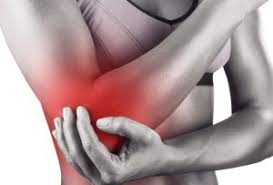Tendons are the strong, fibrous tissues that connect muscles to bones, enabling movement and stability. These tissues are susceptible to various conditions or injuries, often caused by overuse, wear and tear, or trauma. Tendon conditions are common and can disrupt mobility, physical performance, and daily tasks. Here’s more on tendonitis, tenosynovitis, and tendinosis and their impacts:
What Is Tendonitis?
Tendonitis, or tendinitis, refers to the inflammation of a tendon. This condition is often caused by repetitive, high-intensity physical activities or overuse of a specific muscle group. Tendonitis is frequently seen in athletes or individuals with occupations that require repetitive motions, like typing, painting, or manual labor.
Common Types
Common areas prone to tendonitis include the shoulders, elbows, wrists, knees, and heels. Tennis elbow and jumper’s knee are some well-known forms of this arthritic condition. Symptoms may include localized pain, swelling, and tenderness around the affected area, particularly when moving the joint or the nearby muscle.
Treatment Options
While rest, modification of physical activities, and targeted exercises may help reduce discomfort, untreated tendonitis can increase the risk of further damage to the tendon fibers. Some treatments for arthritic tendon conditions include:
- Custom Orthotics
- Extracorporeal Pulse Activation Technology (EPAT)
- Steroid Injections
- Immobilization
- Physical Therapy
What Is Tenosynovitis?
Tenosynovitis occurs when the synovial sheath, which is the protective covering around a tendon, becomes inflamed. This condition often develops in tendons that pass through narrow spaces or are under repeated tension, like those found in the hands, wrists, or feet. This condition may arise from activities that involve pinching, gripping, or frequent wrist movements.
Symptoms may include pain, swelling, and reduced range of motion. This can make it difficult to complete tasks like writing, grasping objects, or using tools. Unlike tendonitis, tenosynovitis specifically involves the sheath that surrounds the tendon rather than the tendon itself. Management strategies often involve modifying daily activities, wearing supportive braces, or practicing gentle stretching to alleviate pressure on the affected area.
What Is Tendinosis?
Tendinosis represents a more chronic condition involving the degeneration of tendon fibers over time, typically caused by repetitive stress or aging. Unlike tendonitis, which involves inflammation, tendinosis is a degenerative condition that does not exhibit the same inflammatory markers. Tendinosis may start with some inflammation, but it behaves differently than arthritis due to structural damage in the tendons. Small tears or structural changes may weaken the tendon’s strength and elasticity, making it vulnerable to further damage.
Tendinosis is most commonly seen in high-load tendons. Symptoms can include persistent pain, stiffness, and reduced functional ability, often worsening with continued use. Because tendinosis progresses more gradually, individuals may not recognize the signs until the condition has advanced. Recovery from tendinosis can take longer than recovery from other tendon injuries and often involves a combination of rest, physical therapy, and exercises designed to promote collagen repair and strengthen the affected tendon.
Tendon Condition Impacts
Tendon-related conditions, whether acute or chronic, can significantly impact one’s daily life and overall well-being. Pain and limited mobility often restrict individuals from performing routine tasks, engaging in physical activities, or maintaining their employment. This is especially true if their work involves repetitive motions. For athletes, these injuries can hinder training and competitive performance, sometimes necessitating a prolonged hiatus from sports. Even for non-athletes, tasks like lifting items, walking, or typing can become difficult and frustrating due to persistent discomfort or stiffness.
Tendon Treatment Plans
Left unmanaged, tendon conditions can lead to compensatory problems in other areas of the body as individuals alter their movements to avoid pain. Understanding the specific nature of a tendon condition is key for developing an effective management plan. Methods suited for tendonitis may not be as effective for long-term tendinosis, underscoring the significance of working with a professional for targeted treatment approaches.
Learn More About Tendonitis Management
Managing tendon-related conditions often involves a combination of preventive measures, physical therapy, and, in some cases, medical interventions. Stretching, strengthening exercises, ergonomic adjustments, and proper training techniques may help reduce the risk of future tendon issues. Speak to a healthcare professional today for personalized guidance on diagnosis and treatment. By working with a podiatrist, you can maintain mobility and develop a personalized treatment plan tailored to your specific needs.

